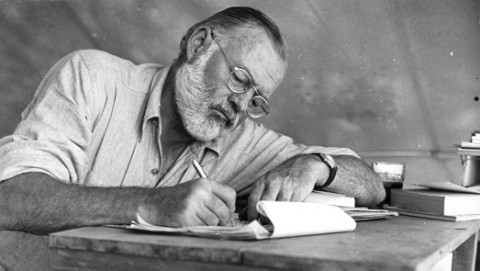I just finished reading Paul Hendrickson’s biography-that's-not-really-a-biography, Hemingway’s Boat.: Everything in Life He Loved and Lost. And like all good biographies (even those that back away slowly when referred to as biographies), it drove me back to the bookshelves, to read the work of the subject.
And the work is a patchy business, it has to be said, with prizes reserved for a few of the short stories, Fiesta, The Old Man and the Sea, A Farewell to Arms and A Moveable Feast.
Reading Hemingway has been like trying on old clothes from years ago you once thought looked really cool. An enjoyable experience but perhaps not considered fashionable anymore.
Hendrickson’s book hints at conflicted sexuality – not a new subject for Hemingway scholars. Its main point is that the writer’s relationship with his boat Pilar was the strong undercurrent below his best years. And the more landlocked and removed he got from his boat and the Caribbean, the more lost at sea he became.
By the time I was eleven and I got to the big library at Coleraine Inst, I gazed up at the tall shadowy shelves and was already aware that Hemingway was one of the big 20th Century names you were Supposed to Have Read. One of the authors known only by their surnames, like generals in some complicated war overseas – Faulkner, Fitzgerald, Steinbeck, Forster.
When pocket money allowed, I had taken to stopping on my way home every now and then at Coleraine Book Shop in Stone Row, a neat oasis of orderly shelves of second hand stock (long since gone). And it was in there that I picked up a copy of Fiesta: The Sun Also Rises (it still has the pencilled price in the back – 40p).
All the world’s a stage, and in my early teens I had sketched out a role for myself as someone with aspirations to be a writer, to be an unrequited lover, carrying my broken heart around the world with a tragic nobility that women would find irresistible.
In other words, I was a sitting duck for Fiesta by the time I read it – I was completely swept away by the doomed expatriate romance and the exotic Parisian and Spanish backdrops. I don’t think I ever quite got over it. That’s the mark of a really good book, I suppose. Some part of it enters you and takes up residence and never leaves.
Of course, the myth of Hemingway is irresistible, even as a source of ridicule. Hendrickson’s biography thankfully doesn’t buy any of the macho Hemingway industry bull. To me, though, it was more the image of the writer that I swallowed like a baited hook. The locomotive power of a man working, pressing the words into the page and getting his work done.
And this is what has drawn me back from the bookshelves to the desk with this little passage from the breathless and beautiful epilogue to Death in the Afternoon. I first read it years ago, and now that writing and creativity have become such a girder running through who I am, I re-read it and share it with a re-found sense of dedication and inspiration.
I dedicate it as a blessing to any of you reading this who are involved in your own creative journey. Take heart – and get your work done.
HEMINGWAY ‘The great thing is to last and get your work done and see and understand; and write when there is something that you know; and not before; and not too damned much after. Let those who want to save the world if you can get to see it clear and as a whole. Then any part you make will represent the whole if it’s made truly. The thing to do is work and learn to make it.’


